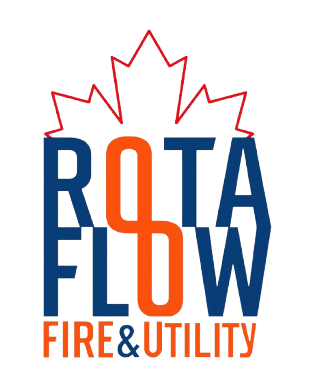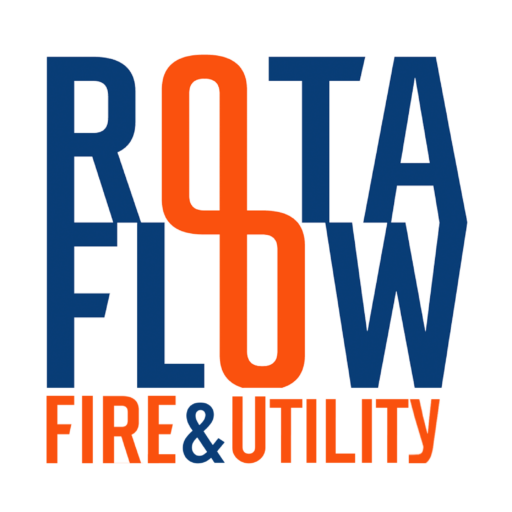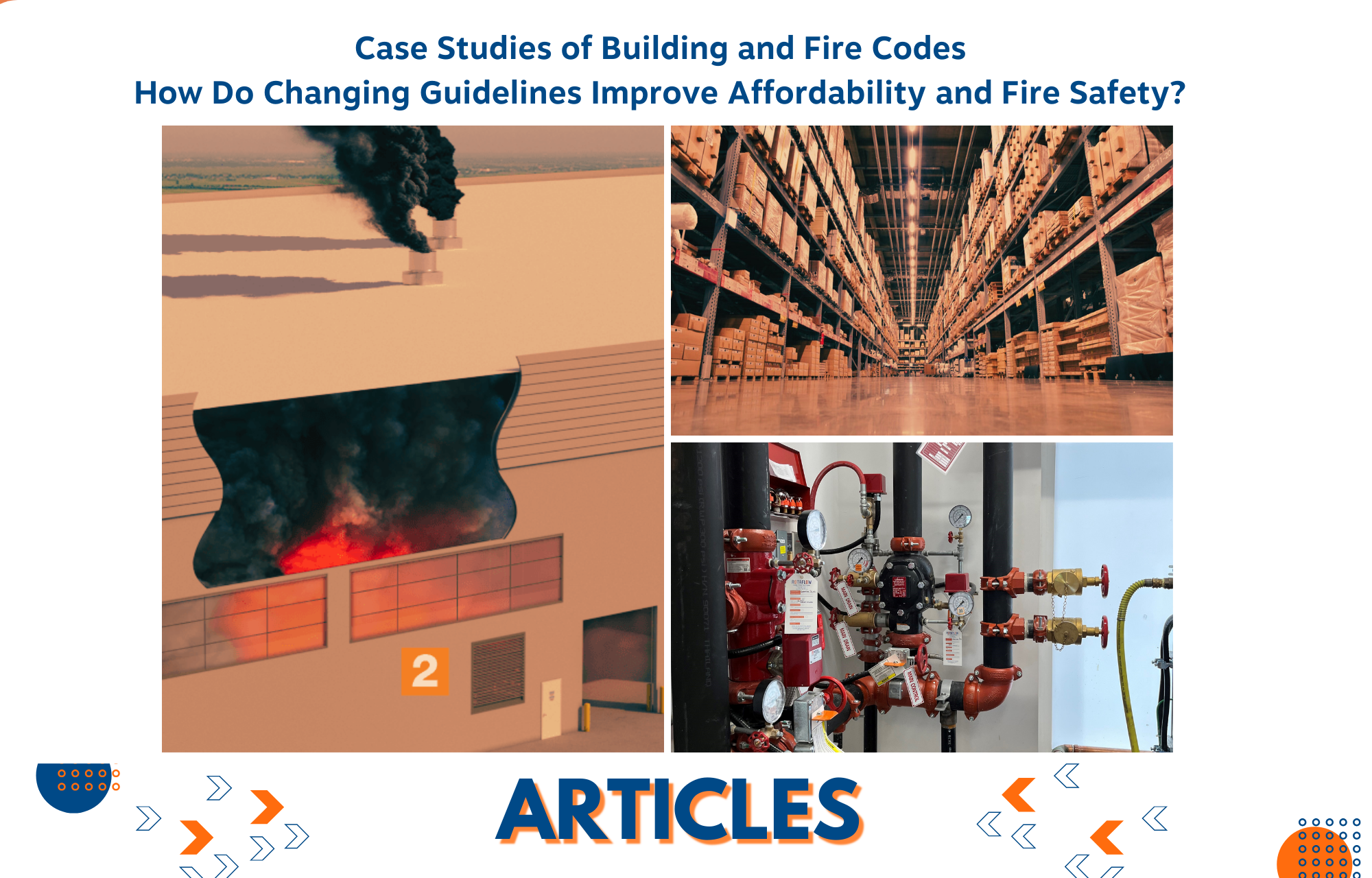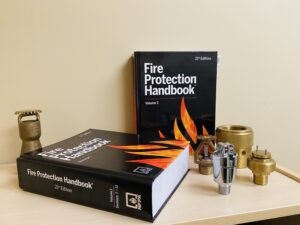How Do Changing Guidelines Improve Affordability and Fire Safety?
Fire sprinklers have long dominated discussions of fire protection and life safety precautions; nevertheless, as buildings, materials, and storage techniques change, so must the codes controlling them. Modern fire dangers like flammable polymers, lithium-ion batteries, and automated storage systems create fresh difficulties for which current rules might not be entirely appropriate. Protecting lives and property depends on making sure fire and construction codes remain applicable and efficient.
This blog explores important case studies stressing regions where fire regulations were deficient, the remedies applied, and the lessons learnt. From resolving out-of-date rules for refrigerated warehouses to enhancing fire safety in high-rise structures, these practical cases show the value of constant code changes.
Working with industry partners to improve and modernise fire safety rules, the National Fire Sprinkler Association (NFSA) has been instrumental in these developments. These case studies highlight how cooperative efforts produce significant changes whether they balance home affordability with life safety or remove unnecessary constraints compromising energy efficiency. We produce safer, smarter, and more sustainable places for the future by matching codes with modern building techniques and fire prevention innovations.
Building and Fire Code Case Studies
For many years, life safety and property protection have revolved mostly around fire sprinklers. The needs for fire safety measures evolve along with buildings. Newer building designs, developments in transportation technology, and alternative materials utilised in storage not thought of years before are all here. Among the fire hazards of today are lithium-ion batteries, flammable polymers, and automated storage systems. It is now abundantly evident that our codes must be current.
This article offers a few case studies illustrating where the codes were lacking, what was done to correct them, and our learning along the way. Front and centre in addressing these problems, the National Fire Sprinkler Association (NFSA) offers workable answers and ensures that the codes remain orientated on both safety and common sense.
Case Study 1: High-Piled Storage—Annual Inspections
The Challenge
Designed to guard life safety in low-rise residential buildings—up to four floors or 60 feet—NFPA 13R was But buildings were pushing the envelope and, occasionally, beyond 13R’s intention as podium building gained popularity. Concerns about firefighters access, attic fires, and vulnerable areas not covered by conventional 13R designs began to surface.
The 2021 codes answered with a hard limit: 13R can only be utilised where the tallest floor is 30 feet above fire department truck access. That limitation excluded many four-storey buildings unless they were on flat locations with simple access. And that begged questions regarding house affordability.
The Fix
NFSA and others suggested allowing some R-2 occupancies to reach 35 feet in 2024. The modification finds a compromise, giving some comfort for homes without neglecting firemen’s safety issues. It is confined, nevertheless, to independent structures rather than those breaking up under the IBC employing firewalls.
 What We Found Out Here
What We Found Out Here
- Both life safety and housing affordability count; the secret is to strike the balance.
- On steep or irregular sites, measurements based on vehicle access are useful but can provide fresh design problems.
- Code modifications taken separately can lead to uncertainty. Thorough reviews assist in organisation.
- Better results for everyone follow from cooperation among the fire department, businesses, and housing activists.
Case Study 2: Refrigerated Warehouse Smoke Vents
The challenge
Whether frozen, chilled, or ambient temperature, refrigerated warehouses have long battled conventional fire code standards that just don’t make sense for these facilities. For years, these buildings needed smoke and heat vents per the International Fire Code (IFC) and International Building Code (IBC). Cutting holes in the roof for vents, however, affects the thermal integrity of the building and results in frost development, condensation, and more energy use. These penetrations cause safety concerns, including slippery ice and water damage to stored items, as well as maintenance issues.
Even worse, these vents offer no additional fire safety value. They are not considered in sprinkler system design, and in many circumstances they can really hinder efforts at suppression by ESFR and CMSA sprinklers.
The Fix
Along with CEVA (Controlled Environment Building Association) and GCCA (Global Cold Chain Alliance), Fix NFSA pushed a plan to modernise the regulations and remove the smoke and heat vent requirements in refrigerated food warehouses. The amendment broadened the exemption from earlier restrictions.
The update contains the following:
Extended Scope: Not only frozen storage facilities, but all refrigerated food warehouses now qualify under the exemption from smoke and heat vents.
Classifications in commodities: It recognises the wider spectrum of products usually found in cold storage and covers buildings containing Class I, II, and III commodities.
Sprinkler Need: The building must be covered by an automatic sprinkler system compliant with NFPA 13 criteria, particularly employing ESFR or CMSA sprinklers with a 12-sprinkler design to qualify for the exemption.
The modifications coincide with the 2025 edition of NFPA 13, which unequivocally states that when ESFR or CMSA sprinklers are deployed, manual or automatic smoke vents are not required—or even advised. This guarantees consistency throughout the guidelines and eliminates the obsolete venting needs from the codes.
Proposed during the 2024 ICC code hearings, the idea is on route for inclusion in the 2027 versions of the IFC and IBC and faces no public opposition.
What We Found Out Here
- This update brings cold storage facility codes current. It removes pointless elements compromising building performance and adds expenses without any advantage for fire prevention.
- Aligning the code with the reality of current cold chain operations required extending the exception to encompass Class III goods and all refrigerated food storage.
- Working together, industry players can propel significant, evidence-based code revisions enhancing operational costs, energy efficiency, and safety.
- Following NFPA 13 helps to clarify uncertainty by offering a consistent, easily applicable and enforceable standard.
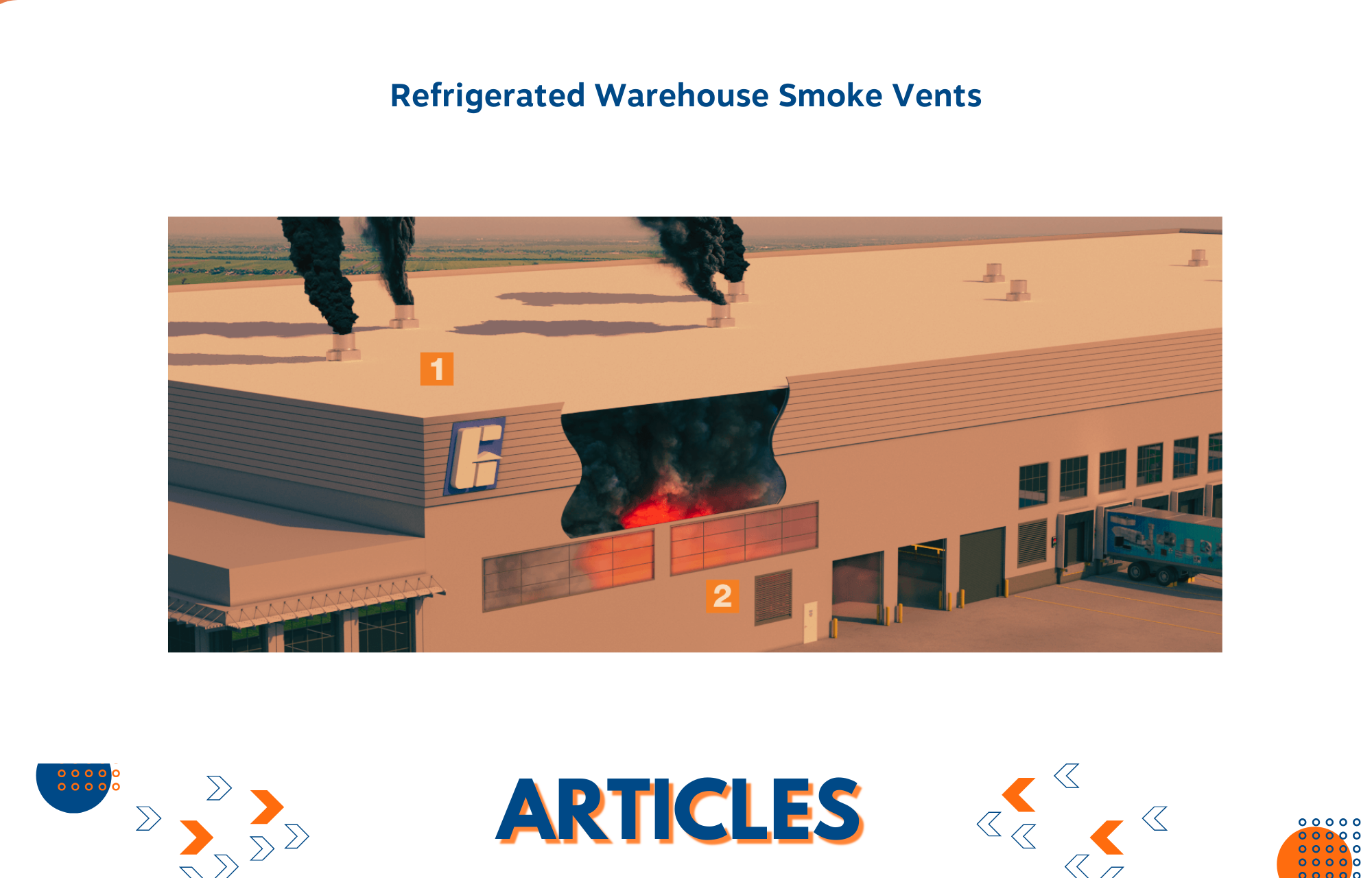
Case Study 3: Water Supply Redundancy in High-Rises Over 420 Feet
The Challenge
Over 420 feet, high-rise buildings bring another set of difficulties. Redundancy in water supply is crucial, but prior codes were not always explicit. They spoke of “zones” and “risers” in ways that deviated from how we define them in NFPA 13, 14, or 20. That left unclear what precisely was needed for express mains, standpipes, and sprinkler systems.
The Fix
NFSA helped advocates to tidy this up. Now, the code calls for structures over 420 feet to be split into vertical water supply zones, language consistent with NFPA 14 and 20. Every one of these zones needs at least two risers to provide alternating floor coverage. Furthermore, such risers have to be found in different stairwells, which makes sense for redundancy and supply protection in case of a localised failure.
What We Found Out Here
- Terminology counts; codes must meet industry norms to prevent interpretation problems.
- Redundancy is a life safety need in these towering buildings; it is not negotiable.
- Design, inspection, and enforcement are simpler and more effective when codes reflect field practices.
Case Study 4: NFPA 13R—A Moving Target in Residential Construction
Designed to guard life safety in low-rise residential buildings—up to four floors or 60 feet—NFPA 13R was But buildings were pushing the envelope and, occasionally, beyond 13R’s intention as podium building gained popularity. Concerns about firefighters access, attic fires, and vulnerable areas not covered by conventional 13R designs began to surface.
The 2021 codes answered with a hard limit: 13R can only be utilised where the tallest floor is 30 feet above fire department truck access. That limitation excluded many four-storey buildings unless they were on flat locations with simple access. And that begged questions regarding house affordability.
The Fix
NFSA and others suggested allowing some R-2 occupancies to reach 35 feet in 2024. The modification finds a compromise, giving some comfort for homes without neglecting firemen’s safety issues. It is confined, nevertheless, to independent structures rather than those breaking up under the IBC employing firewalls.
What We Found Out Here
- Both life safety and housing affordability count; the secret is to strike the balance.
- On steep or irregular sites, measurements based on vehicle access are useful but can provide fresh design problems.
- Code modifications taken separately can lead to uncertainty. Thorough reviews assist in organisation.
- Better results for everyone follow from cooperation among the fire department, businesses, and housing activists.
Final Thoughts
These case studies highlight how the codes are changing to match contemporary building and technology. From striving to guarantee that fire prevention systems are efficient, useful, and enforced, NFSA has been involved every stage of the process It’s about improving the codes, not only about their variations.
Courtesy: Jeffrey Hugo, Vice President of Codes, Standards, Training and Education for NFSA.
